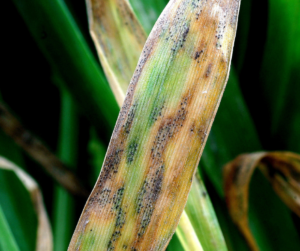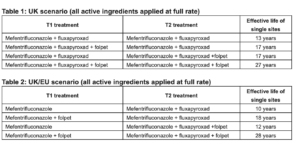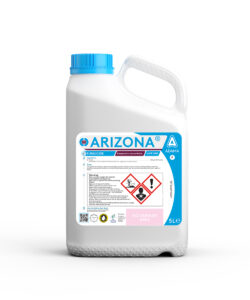Benefits of folpet in prolonging the effective life of single site fungicides
4th April 2023
New modelling work indicates that the inclusion of the multi-site fungicide, folpet, can more than double the effective life of fungicide treatment programmes containing ‘at risk’ single site modes of action.

Speaking at an online seminar hosted by ADAMA Agricultural Solutions UK Ltd, Dr Mike Grimmer of the ADAS Crop Disease Management team outlined the findings of a new round of modelling work in which it was found that the addition of folpet can extend the effective life of programmes containing the azole, mefentrifluconazole, and the SDHI, fluxapyroxad.
The modelling work was designed to assess the usefulness of folpet as a tank mix partner in septoria application programmes and to quantify the effect of folpet on the rate at which disease resistance develops to ‘at risk’ single site modes of action.
The project studied the effect of adding folpet to two scenarios: a UK-relevant treatment programme (SDHI applied twice) where both single site actives were applied in mixture at the T1 and T2 spray timings, and a UK/EU-relevant scenario (SDHI applied once) where only mefentrifluconazole was applied at T1, followed by mefentrifluconazole in mixture with fluxapyroxad at T2.
The modelling work assessed the expected effective life of the treatment programmes (the time between the introduction of the fungicides and the moment at which effective disease control is lost) and investigated how the addition of folpet can extend this effective life.

Without the inclusion of folpet, the effective life of the treatment programmes was predicted to be 13 years when used at their full rate in the UK scenario, and 10 years in the EU scenario.
The addition of 1.5 litres of folpet at either the T1 or T2 timing extended this to 17 years in the UK programme, while its inclusion at both of timings extended the effective life of the partner products to 27 years (table 1). In the EU scenario, the addition of folpet at T1 extended the effective life of the single sites from 10 years up to 18 years. Adding folpet at T2 also extended the effective life, but by a more modest two years (up from 10 years to 12 years). Meanwhile, the inclusion of folpet at both timings extended the effective life from 10 to 28 years (table 2).
“This latest round of modelling work clearly shows that folpet can substantially increase the effective life of typical treatment programmes,” Dr Grimmer explains. “However, the extent to which folpet increases the effective life of treatment programmes depends on how folpet is used, with the timing of its inclusion, as well as how many applications are made and at what rate all having an impact.”
The study also highlighted that increasing the dose of ‘at risk’ single site fungicides can decrease their effective life.
“The over-arching message is that relying solely on single site modes of action and using these products at their maximum rates will result in these products experiencing a rapid decline in efficacy as resistance develops,” Dr Grimmer adds. “A more sensible approach is therefore to include a multi-site fungicide in spring spray programmes, not only to improve overall disease protection efficacy, but also to maintain disease control as resistance selection progresses.”

“In wheat, the key timing to include folpet is at T1 when it will boost protection and help crops to stay ahead of the disease. Using folpet at T1 will help in all scenarios,” he explains, “with a subsequent application at T2 helping to maintain protection and keeping the upper canopy greener for longer. This subsequently enables crops to capture more sunlight which ultimately translates through to better yields.”
In high risk septoria situations, such as where a susceptible variety has been drilled early in a wet, mild year, Mr Bailey recommends using folpet at the T0 timing, with subsequent applications made at T1 and T2 “to power up the programme and provide season-long protection”.
Mr Bailey also explained that folpet provides protection against ramularia and net blotch in barley, as well as activity versus rhynchosporium. “In winter barley the key timing for the inclusion of folpet to control ramularia is at T2,” he describes, “but improved results can be seen when it is applied at two spray timings, with programmes that include folpet at T1 contributing to the control of net blotch and rhynchosporium and also helping with resistance management of these key diseases.”
Likewise, the T2 timing is also key for protecting spring barley against ramularia, with a two-spray approach (at T1 and T2) giving the best results, particularly where disease pressure builds early because of wetter spring conditions.
“In scenarios where resistance management is the absolute driver in all crops, it is advisable to maximise the dose of the active ingredient with the lowest risk of resistance,” Mr Bailey adds. “In other words, use a full rate dose of folpet to protect ‘at risk’ single site modes of action, and, where disease pressure allows, reduce the selection pressure exerted on the latter by applying them at an appropriate dose in mixture.”
You can read more information about how and when to use folpet.

